Crafting a keyword research report is a fundamental piece of the SEO puzzle. It allows you to organize essential data properly, which is important for your clients. A clean report is an effective method of making your customers trust the information they see and, most importantly, understand it.
Imagine you finally landed your first client project. As you’re eager to start, you must build the perfect keyword research report.
Here’s the challenge: what would be the friendliest way to present your finds, especially when your customer barely knows about search engine optimization?
The good news is that it’s completely possible, and even better, at the end of this guide, you’ll realize that it is as easy as ABC (yes, I have no bad news for you today).
Let’s rewind the tape a little, and we’ll review this process from the beginning.
The Purpose of Keyword Research
The keyword research process in SEO involves discovering and analyzing phrases people enter into search engines. The purpose is to find relevant keyword opportunities for a website or webpage.
Hold on… What’s a “relevant keyword”?
Because randomly adding a keyword throughout your webpage won’t get you ranking anymore, you have to concentrate on the intent behind it. The search intent behind a keyword or phrase takes one of the most important traits for a keyword to be relevant.
Each type of search intent represents a different opportunity for a business, and you must build content around it.
The searcher’s purpose and the business goals should align. This simple action makes the use of certain keywords or phrases relevant to both parties: businesses and searchers.
Communicating company goals is essential before starting a keyword research report!
Now that you know how to make everybody win. Let’s begin.

Identifying Opportunities with KWFinder
At the early stages of keyword research, the purpose should be to understand what people are searching for, how many searches are looking up a certain query, and the results they expect to receive. These keywords are the basis of any SEO campaign, as they will help obtain the organic traffic any website longs for.
Before we start identifying opportunities, it’s best practice to ensure your business is present at every stage of the buyer’s journey. This will help you think holistically throughout the process and stay aware of the different reasons your potential customers could find your business.
Next, we’ll review how aligning keywords with business goals works. Then, we’ll design a beautiful keyword research report.
Are you ready for a fictional commitment? It’s time for us to open a marketing agency together!
Let’s say our first client came in, and we are now working with the SEO campaign of a temporary tattoo brand (cheers to us!). Our customers will allow us to view each stage of making a keyword research report.
Goal Setting
There are many different scenarios at this stage that could completely change the keyword research process. To meet business goals, goal setting is a fundamental step, and it will vary according to different objectives, for example:
- Increasing traffic
- Growing leads
- Scaling sales
- Generating a larger email list
- Ranking higher in SERP results
The primary goal of our first (fictional) client is to attract new visitors to their website through informative blog posts, as well as update product web pages to increase conversions.
This means that before considering potential topics to cover, we have to set a few important requirements straight: The search intent behind a relevant keyword or phrase would be informational and aimed at prospects at the top of the marketing and sales funnel.
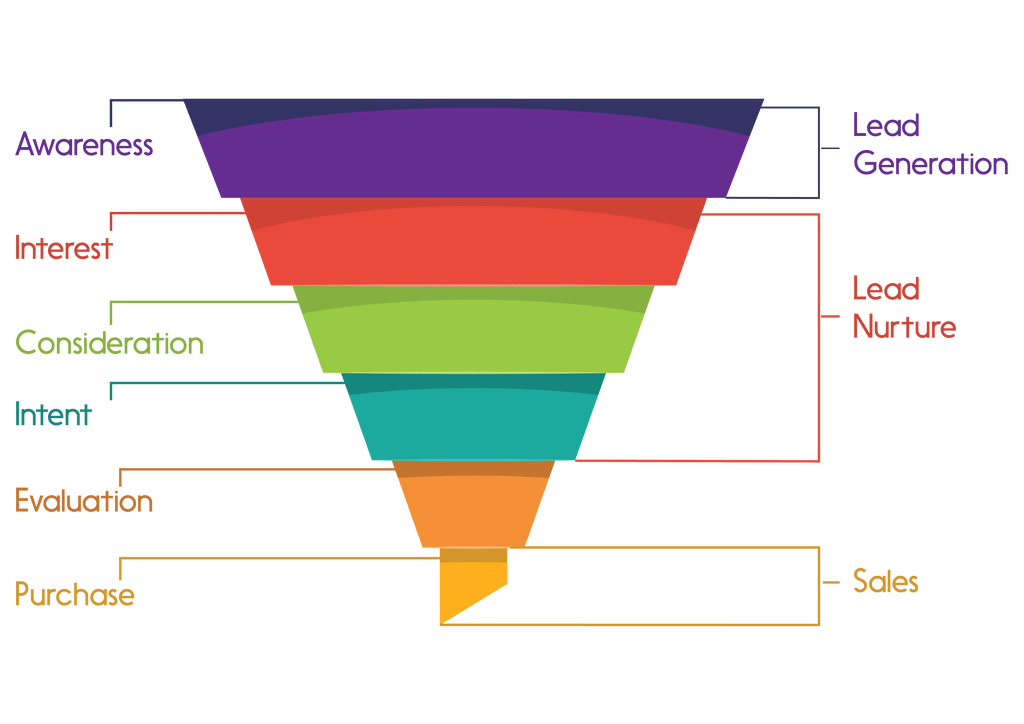
In addition, we should also consider transactional keywords to optimize product pages accordingly. Certainly, these would be targeted to a different type of audience as they have almost reached the bottom of the marketing and sales funnel.
Got the idea? Let’s move on.
Seed Keyword Brainstorming
Defined as the ground or base list of keywords most relevant to a business, seed keywords provide the foundation for keyword research. This is the fun part because the stages of finding keyword opportunities actually start at this point.
Alright, how can you come up with these?
Seed keywords are frequently composed of 1, 2, or 3 words, and these are general terms associated with the business niche. A good way to start is by writing down all the head terms relevant to a website’s products and services.
In the case of our fictional customer, the baseline list would include keywords like: “temporary tattoos”, “removable tattoos”, “fake tattoos”, and “stick-on tattoos”.
Think quick: Can you think of a couple of seed keywords for the latest project you worked on?
This stage involves a lot of research, creativity, and thinking. If you get stuck after writing down only a few ideas, don’t freak out; you can also try:
- Browsing through the website and products
- Listing related search terms found on Google
- Checking over the current ranking pages and content
- Finding competitor’s keywords
Keyword Researching
At this step, we move on to finding popular long-tail words and phrases; a keyword research tool will make this easy. Remember what I mentioned earlier? These keywords should also be relevant to the website we’re working with and the target audience.
Considering that, these are the most important factors to look at while choosing keywords:
Search volume
Traditionally, the higher the average search volume for a keyword, the better. That means it receives a high demand; however, you shouldn’t underestimate keywords with low search volume values.
When combined, keywords with low search volume scores could add to strong traffic. There’s a concept in SEO called the keyword golden ratio, which consists of ranking for less-frequently searched keywords more quickly. However, we’ll follow the traditional method in this article.
Keyword difficulty
Contrary to search volume, the lower the competition, the better. In theory, that would mean ranking for a keyword will be easier. Note that there’s no ideal keyword difficulty range as it will depend on the website’s competitive power.
It’s simple; it would be unrealistic to consider a keyword targeted by huge brands with strong link profiles if the website you’re working with is small compared to them. The less competitive terms are usually more specific because the searcher knows exactly what they want. These longer keywords could lead to higher conversions.
Search intent
This factor involves performing SERP analysis to determine a keyword’s relevancy. As a best practice, you should shortlist terms and phrases that are highly relevant to your website. Crafting valuable content around the intent of a long-tail keyword could yield serious results.
For instance, the user intent behind the keyword phrase “How do temporary tattoos work?” would be informative and ideal for a blog post. And, “InkBox tattoos” is navigational as it mentions the brand. Lastly, “buy temporary tattoos” is transactional and perfect for a product page. Notice how intent optimization is a powerful tool?
Coming up, I’ll share a common scenario to help you understand these factors clearly. Together, we’ll build a list of keywords, and our fictional client will take the leading role here.
Let’s start by entering one of our seed keywords into a keyword research tool:
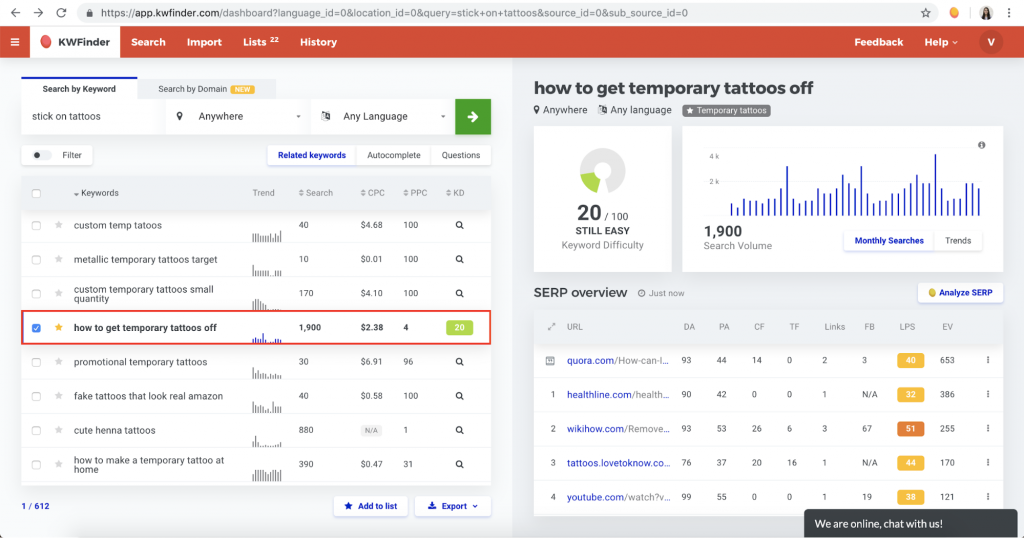
Because it includes a question, it would make sense to assume that the search intent behind “how to get temporary tattoos off” is informational. Despite that, analyzing the SERPs is important to discover more about the top-ranking pages.
You should repeat this process until you collect a considerable list of keywords to target. For convenience, save your findings into a list.
Pro tip: Give your keyword list a specific name. This way, you’ll know exactly what you’re working on and the aim of the keyword report you will deliver.
Building A Keyword Research Report with KWFinder
By this point, you should have a list of keyword opportunities. Now, it’s time to build a client-friendly report that contains the best keywords and phrases for a website.
Now, I’ll use the Mangools SEO keyword research template. It will only take a handful of steps to turn my exported list into an eye-catching report that offers viewers a simple-to-understand overview of the data.
Here’s what makes the report so easy to understand:
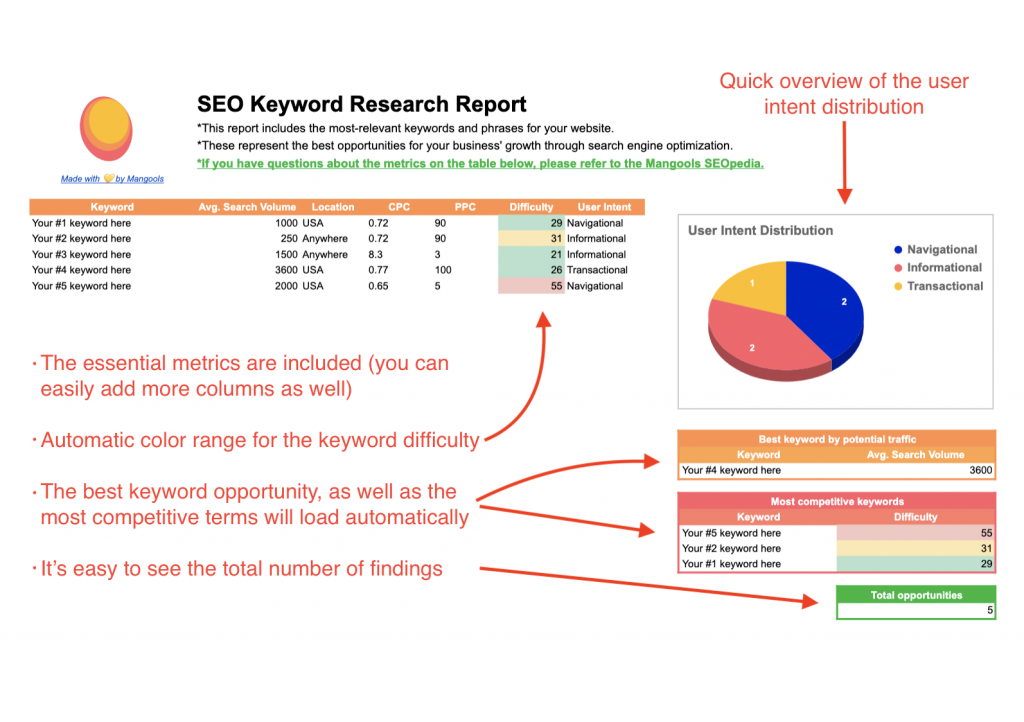
Because each keyword could take several forms of web content to satisfy the needs of common market searches according to user intent, it is a nice idea to classify them. This is why there’s a column in the template dedicated to user intent, and each cell has a dropdown list that you can open to quickly select the correct option for each keyword.
Do you like it? Let me show you how to take advantage of it:
Make a copy of the template
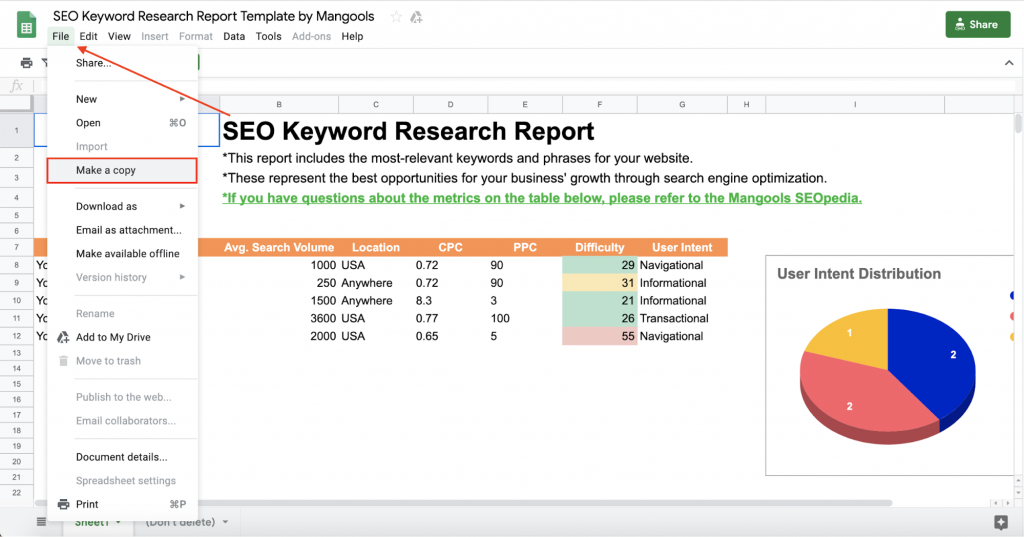
Download the SEO keyword research report template > click on file > make a copy.
Export your list into a CSV file
Return to the keyword research tool you use > Open the list > Export to CSV.
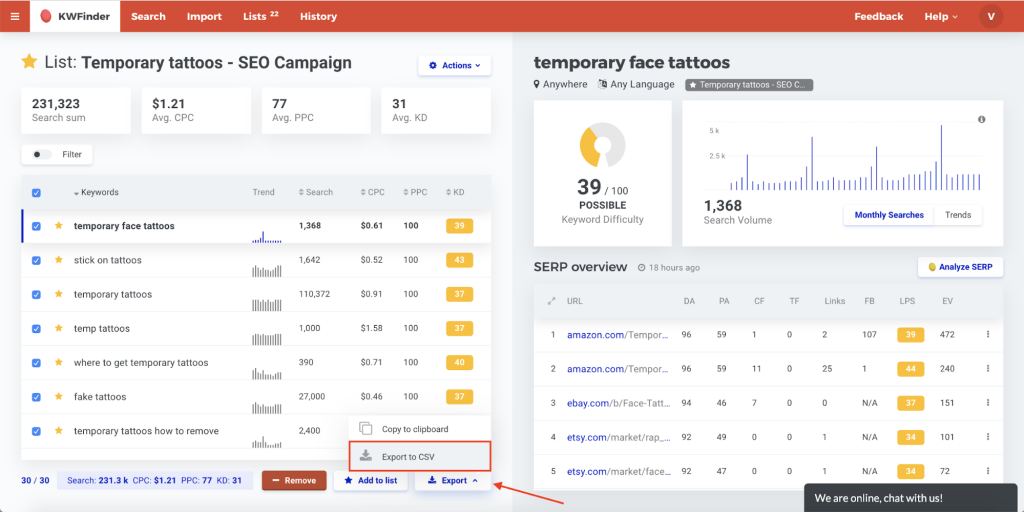
Import your list into a new sheet
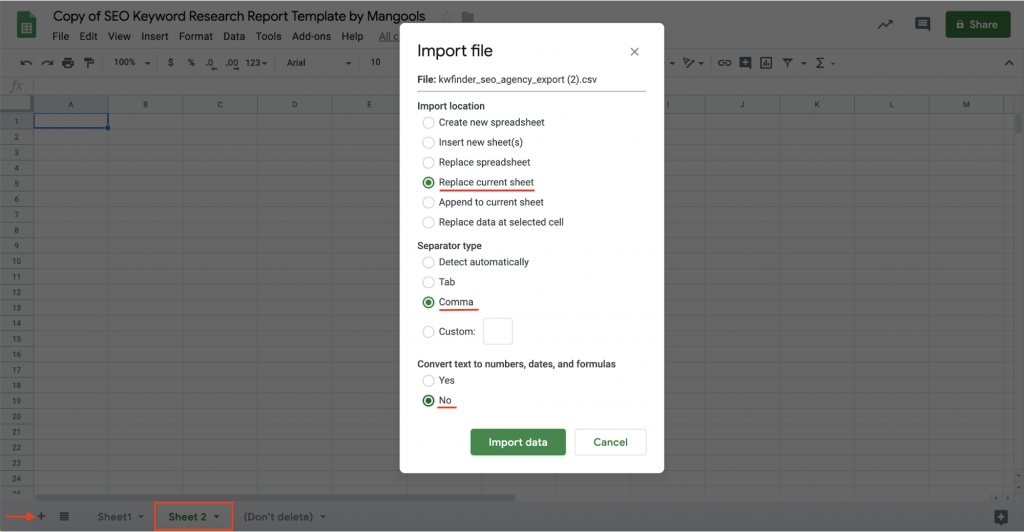
Open the template copy > Add a new sheet > Click on file > Import > Upload the CSV, selecting the settings above.
Copy, paste, and format the data
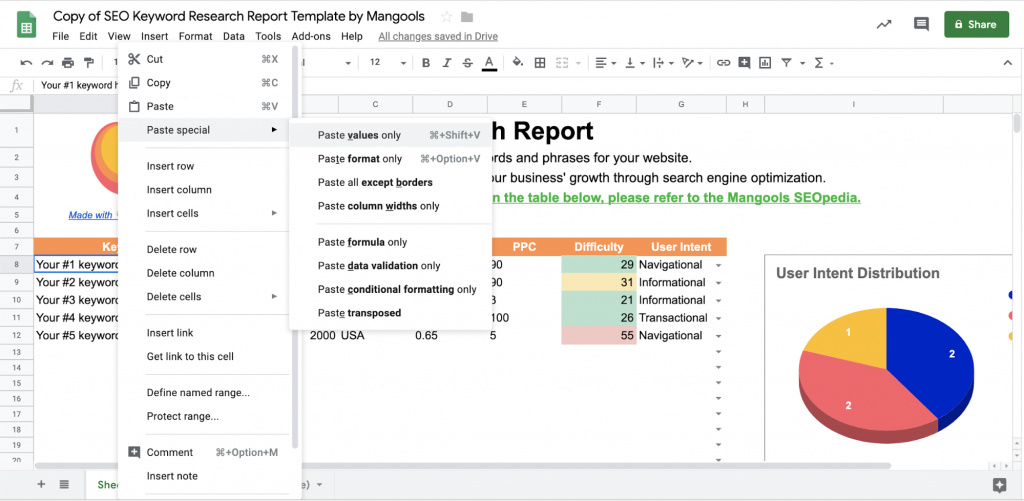
Copy the right columns of data from your exported list > Return to sheet1 > Click on the first sample keyword > Right-click > Paste special > Paste values only
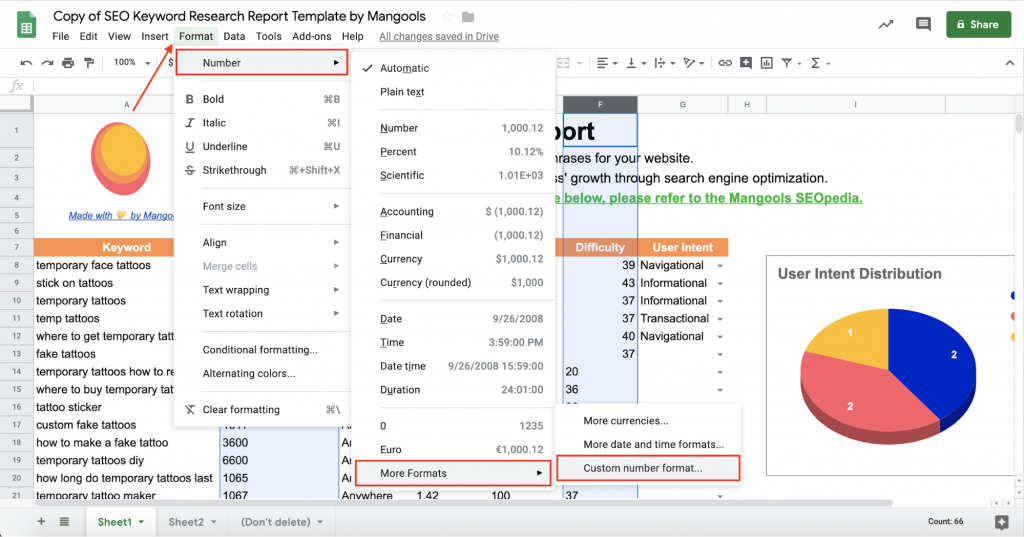
Select the columns B & F > Click on format > Number > More Formats > Custom number format
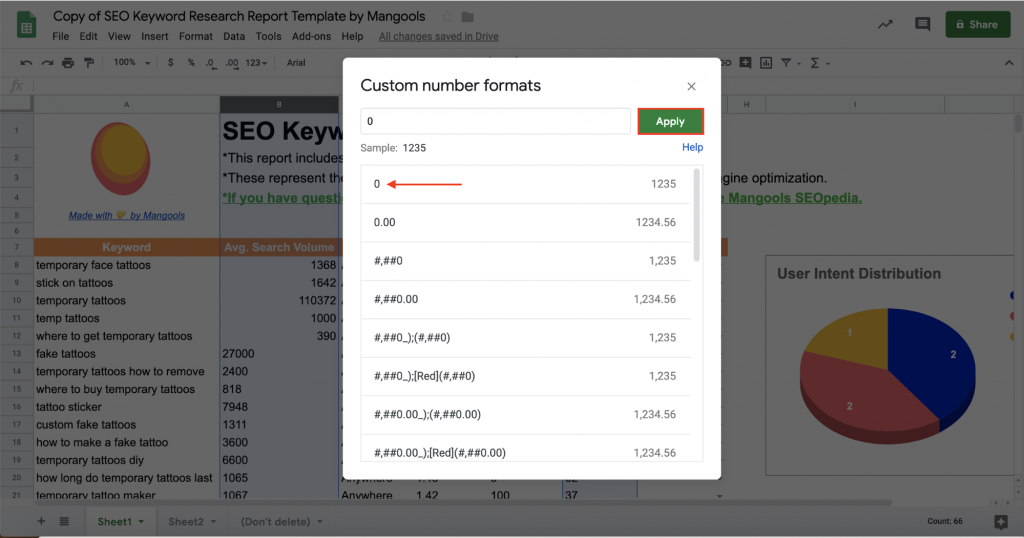
Keep the custom number format at “0” > Apply.
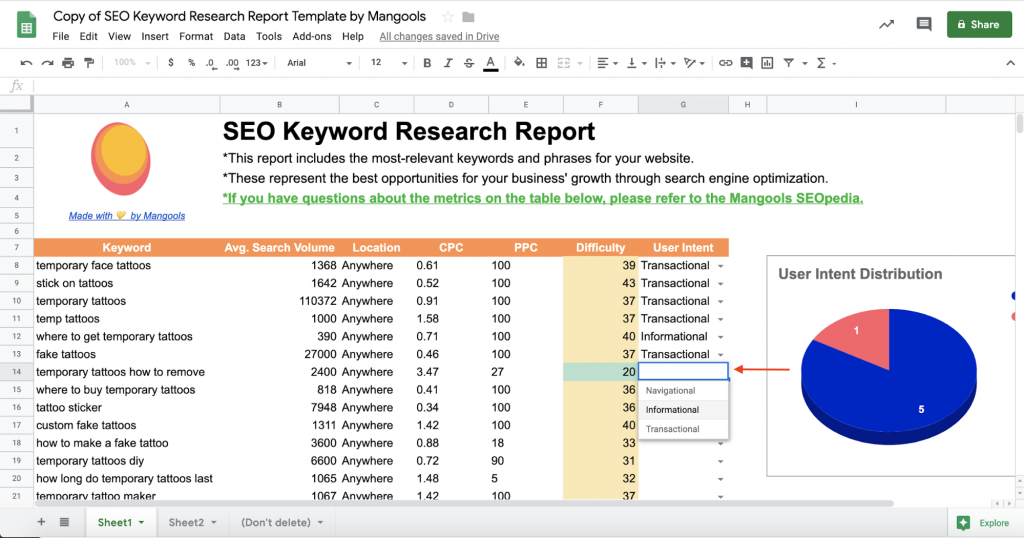
Select the search intent for the listed keywords using the dropdown list.
Present the results to your clients
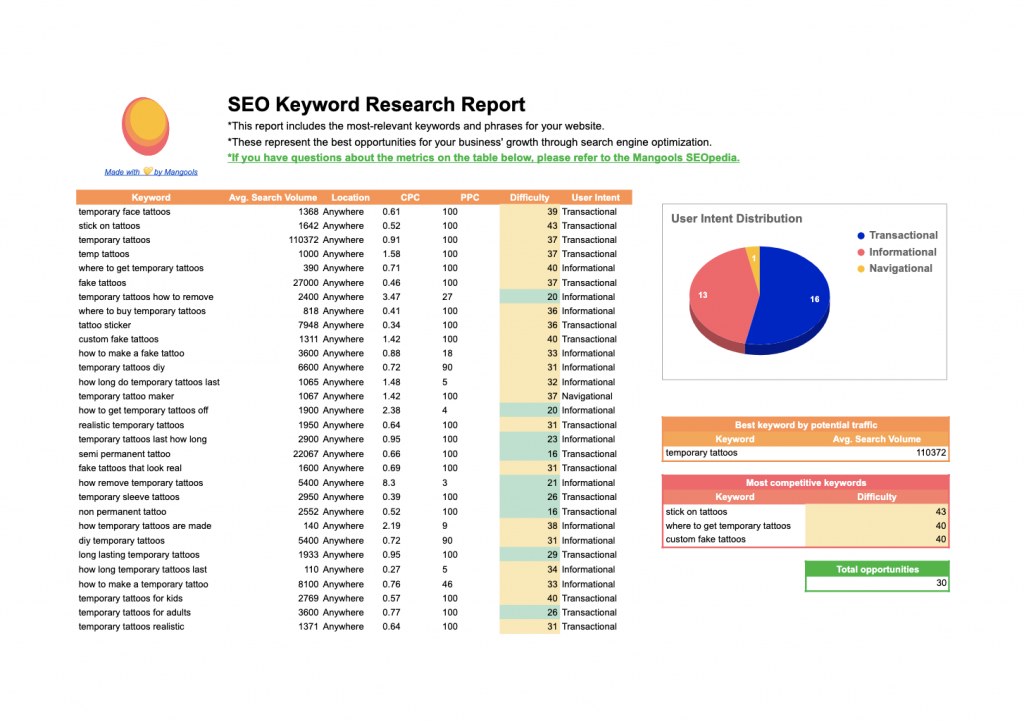 Once your data is properly organized and formatted > Click on file > Download as PDF > Export > Voilà!
Once your data is properly organized and formatted > Click on file > Download as PDF > Export > Voilà!
You should follow These essential steps to build a keyword report and present it most effectively and simply. Of course, you can customize it as you prefer. This template is a starting point for you to design a unique report that represents your business.
Ready To Begin?
Whether you’re beginning your journey as an SEO or simply want to present a clear overview to your clients, this is a useful resource for you to save. Besides buying you lots of time, you will create an organized space to work with in the future.
Granted, keyword research can be lengthy as it’s only the beginning of search engine optimization. However, summarizing your results in an orderly fashion while also keeping them visually appealing could significantly impact your efforts.
I appreciate your feedback. Feel free to download your template today and get in touch with me if you have suggestions!
This section could be a bit shorter. Well, it depends on the blogs you plan to outreach, but since the article is about making keyword research reports, I’d say they won’t be interested in the purpose of keyword research that much.
Since it’s aimed at business owners/SEOs, I wanted to sort of put the importance of search intent to business goals out there. I made it shorter and straight to the point :)

Thanks for sharing tips
It is a very good blog for an SEO freelancer.
It helped me a lot to send a detailed report of keywords research to my client.
Thank you!